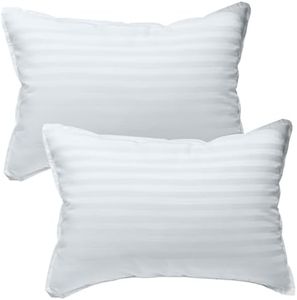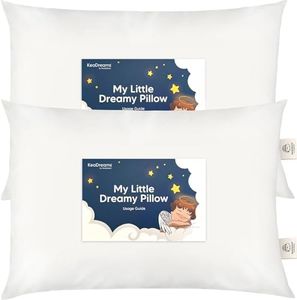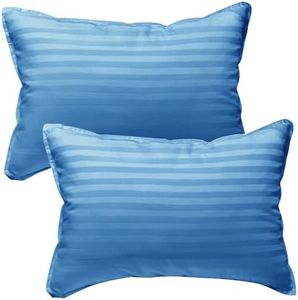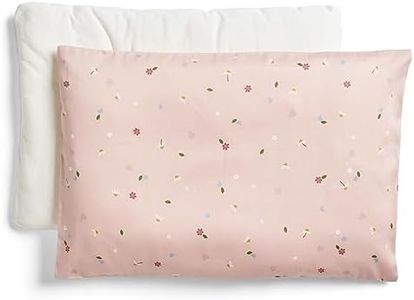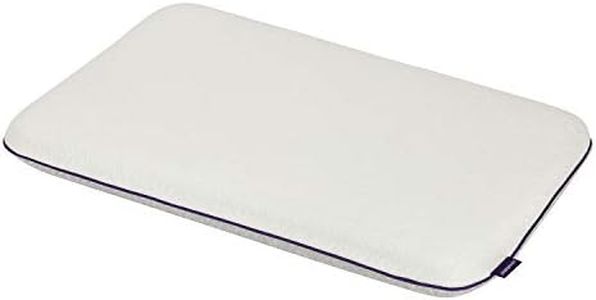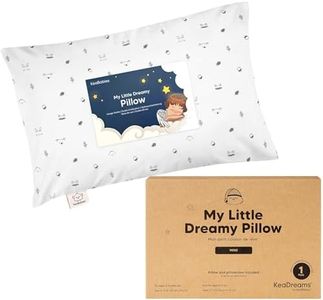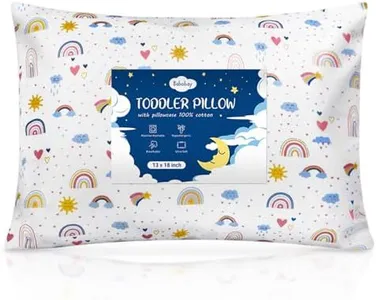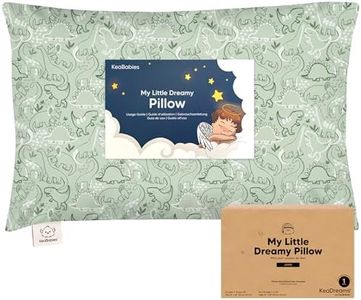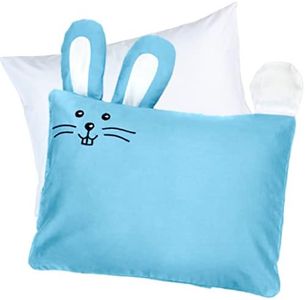We Use CookiesWe use cookies to enhance the security, performance,
functionality and for analytical and promotional activities. By continuing to browse this site you
are agreeing to our privacy policy
10 Best Toddler Pillows
From leading brands and best sellers available on the web.Buying Guide for the Best Toddler Pillows
Choosing a toddler pillow is an important step in making sure your little one has a comfortable and safe sleeping environment. Toddler pillows are different from adult pillows in size, firmness, and the materials used—they are designed to support your child without causing any discomfort or safety risks. When picking a pillow, always prioritize your child's specific needs about age, allergies, and sleeping habits. Focus on options marketed for toddlers, as these are generally made to suit young children and meet higher safety standards.Pillow SizePillow size refers to the dimensions of the pillow, and it's important because a pillow that is too large or too small can affect your toddler's comfort and sleeping posture. Toddler pillows are typically smaller than standard pillows, usually around 12x16 inches. A pillow that is too big may cause neck strain, while one that is too small may not provide enough support. Choosing a pillow that matches your toddler's bed and fits their head and neck comfortably is best, especially since they move around a lot in their sleep.
FirmnessFirmness describes how soft or hard a pillow feels when pressed. For toddlers, the right firmness is very important since a pillow that is too firm can be uncomfortable, while one that is too soft can pose a suffocation risk. Generally, toddler pillows should be medium-firm—a balance that gives gentle support while also being comfortable and safe. Consider your child's sleeping habits: if they sleep on their stomach or side, a slightly firmer pillow might offer better support, but always avoid very soft pillows for toddlers.
Fill MaterialFill material refers to what the pillow is stuffed with, like polyester fiber, memory foam, cotton, or hypoallergenic fills. This is key for comfort and for minimizing allergies or irritation. Polyfiber and cotton are common in toddler pillows as they are soft, supportive, and generally hypoallergenic. Memory foam is less common due to potential safety concerns in young children. If your child has allergies, look for hypoallergenic fills. Your child's sensitivity and your preference for maintenance will guide your choice—polyfiber and cotton are typically easy to wash and care for.
Cover MaterialThe cover material is the fabric that wraps the pillow's filling. It's important because it touches your child’s skin and is responsible for breathability and softness. Cotton is a popular choice because it is gentle and allows airflow. Some covers are also removable and machine-washable, which is helpful for hygiene and managing messes. If your child has sensitive skin, look for natural, chemical-free fabrics. Breathability and how easy it is to clean should drive your decision.
Safe DesignSafe design includes any features that make the pillow better suited for toddlers, such as compliance with safety standards, lack of small detachable parts, and certifications like OEKO-TEX or similar. This is important to ensure the pillow does not pose any risks (such as choking hazards or chemical exposures). Making sure the pillow has safety certifications, no zippers or buttons, and is made specifically for toddlers helps maintain a secure sleeping environment.
WashabilityWashability describes how easy it is to clean the pillow and its cover. Toddlers can have accidents and get their pillows dirty often, so it's important that both the pillow and its cover can be washed regularly. Pillows with removable, machine-washable covers are ideal, and some even allow the entire pillow to be washed. If you expect spills or are concerned with hygiene, prioritize easy-cleaning features to help you maintain a clean sleeping space for your child.

